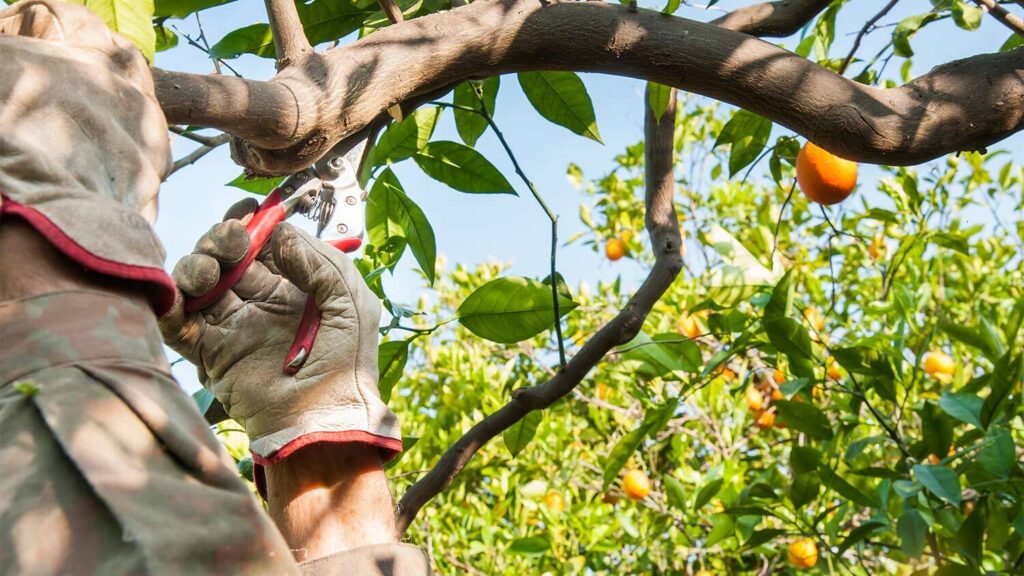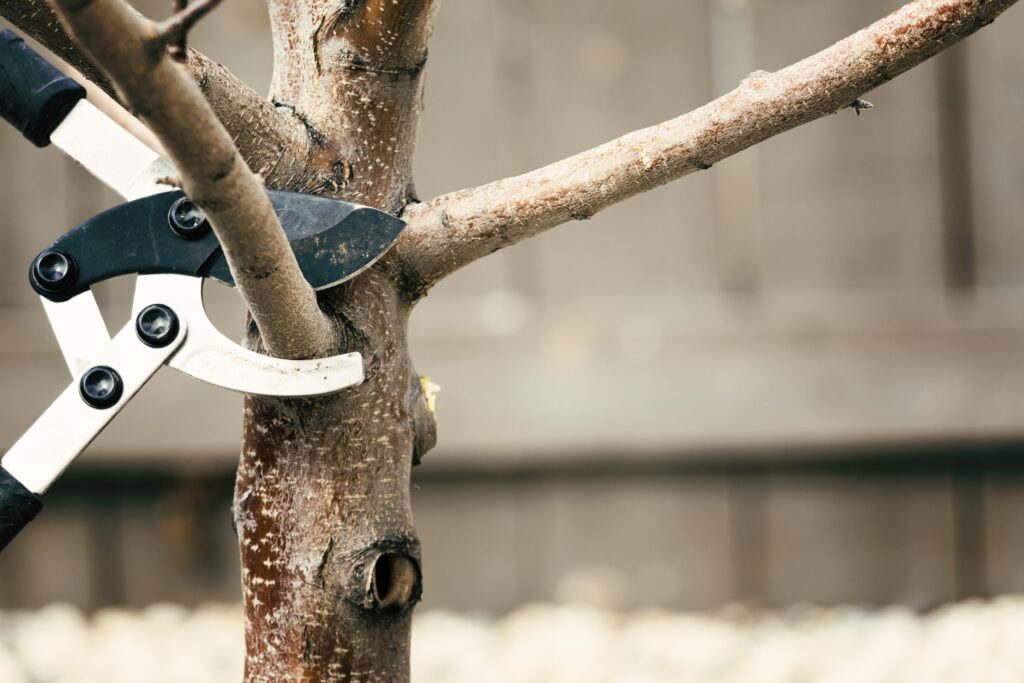Tree pruning is a common task that homeowners undertake to maintain the health and appearance of their trees. However, it’s important to approach tree pruning with caution and avoid some common mistakes that can harm the tree and compromise its well-being. In this article, we will explore the basics of tree pruning, highlight the importance of proper pruning techniques, discuss common errors in DIY tree pruning, and provide tips for successful tree pruning.
Understanding the Basics of Tree Pruning
Before delving into the common mistakes to avoid, it is crucial to have a solid understanding of the basics of tree pruning Sydney. Pruning involves the selective removal of certain parts of a tree, such as branches, to improve the tree’s structure, health, and overall appearance. It is important to note that pruning is not just about chopping off branches at random but requires careful consideration and knowledge of the tree’s growth patterns and needs.
When it comes to tree pruning, there are several key factors to consider. First and foremost, understanding the tree’s growth habits is essential. Different tree species have different growth patterns, and knowing how they naturally develop can help guide your pruning decisions. Some trees, for example, have a central leader, which is a dominant vertical stem that should be preserved to maintain the tree’s structural integrity. Other trees have multiple leaders or a more open branching structure, requiring a different approach to pruning.
Another important aspect to consider is the timing of pruning. While some trees can be pruned at any time of the year, others have specific pruning windows. For example, deciduous trees are typically pruned during their dormant season, which is in late winter or early spring before new growth begins. Pruning during this time allows the tree to heal quickly and minimizes the risk of disease or pest infestation. On the other hand, pruning flowering trees should be done right after they bloom to avoid cutting off next year’s flower buds.
See Also: Reclaiming Space and Aesthetics with Stump Removal

The Importance of Proper Tree Pruning
Proper tree pruning plays a vital role in maintaining the health and longevity of trees. It helps to remove dead, diseased, or damaged branches, promoting healthier growth and minimizing the risk of disease and infestation. Additionally, pruning enhances the overall aesthetics of the tree, improving its shape and symmetry.
When pruning, it is crucial to make clean cuts to minimize the risk of infection. Ragged or torn cuts can create entry points for pathogens, leading to decay and further damage to the tree. Using sharp and well-maintained pruning tools, such as pruning shears or loppers, ensures clean cuts and reduces the risk of injuring yourself or the tree.
Furthermore, proper pruning techniques can help manage the size and structure of trees. By selectively removing branches, you can shape the tree to fit its surroundings, preventing it from obstructing power lines, buildings, or other structures. Pruning can also help improve air circulation within the tree’s canopy, reducing the risk of fungal diseases and promoting overall tree health.
Essential Tools for Tree Pruning
Equipping yourself with the right tools is crucial for successful tree pruning. Some of the essential tools include pruning shears, loppers, pruning saws, and pole saws. These tools enable you to make clean cuts and reach branches at varying heights. Using the right tools not only ensures a job well done but also reduces the risk of injury.
Pruning shears, also known as hand pruners or secateurs, are ideal for cutting small branches and twigs. They are designed to make precise cuts and are perfect for shaping young trees or removing deadwood. Loppers, on the other hand, have long handles and are used for cutting thicker branches. They provide more leverage and allow you to reach higher branches without the need for a ladder.
For larger branches, a pruning saw is necessary. Pruning saws have a curved or straight blade with coarse teeth that make cutting through thick wood easier. They are available in different sizes and designs, allowing you to choose the one that suits your needs. Lastly, pole saws are used for pruning branches that are out of reach. They consist of a long pole with a saw or pruning blade attached to the end, enabling you to safely trim branches from the ground.
When using pruning tools, it is important to keep them clean and well-maintained. Dirty or dull tools can make pruning more difficult and increase the risk of injury. Regularly cleaning and sharpening your tools will ensure they perform optimally and prolong their lifespan.
Common Errors in DIY Tree Pruning
Despite good intentions, DIY tree pruning can go wrong if not done correctly. Here are some common errors to avoid:
Incorrect Timing of Pruning
Pruning at the wrong time of year can have detrimental effects on tree health. Different tree species have specific pruning requirements, and timing plays a crucial role. Pruning during dormancy, typically in late winter or early spring, is often ideal. However, some trees require different pruning times, and it is essential to research and understand the appropriate timing for the specific tree species you are dealing with.
During the dormant season, trees are less vulnerable to diseases and pests, making it an optimal time for pruning. Pruning during this period also allows the tree to allocate its energy towards healing and regrowth once the growing season begins. However, it is important to note that not all trees follow the same dormant period. Some trees may have specific pruning requirements during other times of the year, such as after flowering or in the fall. Therefore, it is crucial to consult reliable sources or seek professional advice to ensure you are pruning your trees at the right time.
Over-pruning and Under-pruning
Both over-pruning and under-pruning can harm trees. Over-pruning, also known as “topping,” involves removing too many branches or cutting branches back to stubs. This practice weakens the tree, making it more susceptible to diseases and pests. It also disrupts the natural growth pattern of the tree and can result in an unbalanced and unsightly appearance.
Under-pruning, on the other hand, neglects necessary maintenance, leading to the accumulation of deadwood and compromised tree structure. Failing to remove dead, diseased, or damaged branches can hinder the tree’s overall health and increase the risk of branch failure during storms or strong winds. Regular pruning is essential to maintain the structural integrity of the tree and promote healthy growth.
Topping Trees and Its Consequences
Topping trees, a practice often done with good intentions, can have severe consequences. Topping involves removing the upper portion of the tree indiscriminately. This misguided approach not only damages the tree’s structure but also exposes it to potential diseases, sunburn, and decay. Topping can lead to the growth of weakly attached branches, which are prone to breakage and pose a safety hazard.
Instead of topping trees, it is crucial to focus on selective and careful pruning techniques. Proper pruning involves identifying and removing dead, diseased, or crossing branches while maintaining the tree’s natural shape and structure. By following correct pruning practices, you can enhance the overall health and aesthetics of your trees while minimizing the risk of damage or disease.

Safety Concerns in DIY Tree Pruning
While the focus is often on tree health and appearance, safety should never be overlooked in DIY tree pruning. Ignoring personal safety measures and neglecting the surrounding environment can lead to accidents and damage. Here are some safety concerns to keep in mind:
Ignoring Personal Safety Measures
When engaging in tree pruning, it is vital to prioritize personal safety. Wearing protective gear such as gloves, goggles, and sturdy footwear can prevent injuries. These safety measures not only protect you from cuts and scrapes but also shield your eyes from flying debris and your feet from potential hazards on the ground.
Furthermore, using appropriate tools and ensuring they are in good condition reduces the risk of accidents. Dull or damaged tools can slip or break, causing unexpected injuries. Regularly inspecting and maintaining your pruning equipment will help ensure safe and efficient pruning.
Before starting any pruning work, it is also important to assess your physical condition. Tree pruning can be physically demanding, requiring strength, balance, and agility. If you have any health concerns or limitations, it is advisable to seek assistance or hire a professional arborist.
Neglecting the Surrounding Environment
When pruning trees, it is crucial to consider the surrounding environment. Ensure there are no power lines or structures that can be damaged during the pruning process. Overlooking these potential hazards can lead to costly accidents, property damage, or even electrical shock.
Before starting any pruning work, thoroughly inspect the area around the tree. Look for nearby power lines, buildings, fences, or any other structures that may be in the way. If you identify any potential risks, it is advisable to consult professionals or utility companies for guidance on how to safely navigate around them.
Additionally, consider the weather conditions before pruning. High winds, rain, or storms can make tree pruning hazardous. Unstable branches or weakened trees can pose a significant risk during adverse weather conditions. It is best to postpone pruning until the weather improves and the tree is stable.
Lastly, be mindful of the impact your pruning activities may have on the surrounding ecosystem. Trees provide habitat for various wildlife, and their branches and leaves contribute to the overall health of the ecosystem. Avoid excessive pruning that may harm the tree’s natural balance or disrupt the local wildlife population.
By prioritizing personal safety measures and being mindful of the surrounding environment, you can ensure a safe and successful DIY tree pruning experience. Remember, when in doubt, it is always better to seek professional help rather than risking accidents or damage.
The Impact of Improper Pruning on Tree Health
Improper pruning practices can have significant consequences for the health of trees. Here are a couple of ways in which poor pruning can impact tree health:
Disease and Insect Infestation Risks
When trees are poorly pruned, it creates entry points for diseases and insects. Improper cuts can result in wounds that are slow to heal and vulnerable to bacterial or fungal infections. It is crucial to make clean cuts at the right angles to promote proper healing and minimize the risk of infestation.
Unwanted Growth Patterns Due to Poor Pruning
Poor pruning techniques can lead to unwanted growth patterns in trees. Stub cuts and excessive pruning can result in the development of weak branch structures and abnormal growth habits. These irregular growth patterns not only detract from the tree’s aesthetics but also compromise its structural integrity.
Tips for Successful DIY Tree Pruning
To ensure successful DIY tree pruning, follow these tips:
Learning the Right Pruning Techniques
Invest time in learning proper pruning techniques. Understand the specific needs and growth patterns of the tree species you are pruning. Make clean cuts just outside the branch collar and avoid leaving stubs or large wounds. By employing the correct techniques, you can maximize the benefits of tree pruning.
Knowing When to Call a Professional
While DIY tree pruning can be satisfying, some situations call for professional expertise. If the tree is large, requires extensive pruning, or poses risks due to its proximity to power lines or structures, it is best to consult an arborist. Professional arborists have the necessary knowledge and equipment to handle challenging pruning tasks safely and effectively.In conclusion, tree pruning is an essential part of tree maintenance, but it should be approached with care. By understanding the basics of tree pruning, avoiding common errors, prioritizing safety, and considering the impact of improper pruning, homeowners can ensure the health and longevity of their trees. Follow the provided tips, and if in doubt, don’t hesitate to seek professional help. Remember, healthy and well-pruned trees contribute to the beauty and value of your property for years to come.
